somewhere there’s a feather
Warning to people using this as an informational resource: I am not a lawyer. I curse a lot. Follow the links in the text to find official sources and research, rather than relying on my say-so.

he flew into my house through an open window, I caught him and let him go. he’s a flycatcher. I didn’t keep any pieces of him, except the poops he left behind on my counter.
There’s this law, see. Every time I bring it up, people get salty about it. Hell, sometimes I get salty about it when people bring it up. But I’m bringing it up anyway.
The Migratory Bird Treaty Act makes it illegal for anyone to take, possess, import, export, transport, sell, purchase, barter, or offer for sale, purchase, or barter, any migratory bird, or the parts, nests, or eggs of such a bird except under the terms of a valid permit issued pursuant to Federal regulations.
The MBTA does not apply to: (1) Nonnative species introduced into the United States or its territories by means of intentional or unintentional human assistance…, or nonnative, human-introduced species that belong to families or groups not covered by the Canadian, Mexican, or Russian Conventions.
(If you have found a feather, there are resources at the very end of this post to help you figure out what bird it’s from, and if you can keep it or not. Click ‘read more’ then scroll down.)

seriously, these guys kept coming in. that place had big windows, they really liked shitting all over my house and refusing to fly back out. this is a female, maybe the special friend of the other bird. she also left some potentially-illegal feces behind.
Definitely-legal feathers come from European Starlings, House Sparrows, Rock Pigeons, Eurasian Collared Doves, AND basically any bird you are legally allowed to hunt (meaning, YOU have a hunting license for it) or farm/have as a pet legally- these game and domestic birds include non-native parrots, wild turkey, pheasant, some geese, peacocks, some grouse, domestic chickens, domestic ducks, domestic geese, domestic quail, and domestic turkey.
(side note: all the feathers used in my work are from legal species and sources; I paint and stain legal feathers to resemble rare/illegal ones, and you can too, and if you do I will keep liking you and your art)
There’s a damn good reason for these laws. I know that you’re thinking, “but I’m not out harvesting cormorants, smashing baby sparrows, and yanking the tails of owls! I found it on the ground, how could it possibly harm anyone for me to just have it in my own house?”

chicken feathers behind a fox skull. these look rad and they’re legal and easy to obtain.
It’s harmful because people actually do kill these birds to get their feathers, and they can and do say the same fucking thing when they get caught. In order to keep poachers from saying they “found” feathers that they actually killed to get, the law simply won’t allow anyone to have them at all. This includes you, and me, and includes ‘private collections’ and ‘I won’t sell it I just want it for my shrine’. I won’t even get started on people who are selling protected birds’ feathers (online or off) because it makes me too frothy and I want this article to make sense.It used to be that poachers could claim they had ‘found feathers’, and didn’t actually kill the birds. This law ensures that this doesn’t happen. There are exceptions and loopholes, of course, but you’ll need paperwork to fit into them.
I understand that it feels like the Fun Police have arrived when someone brings up the fact that you’re endangering birds by keeping those crow feathers in your hat. Hell, I know that before I got super involved in this kind of art I pretty much felt the same way. It wasn’t until I did a lot more reading and a lot more thinking that I really got it. I don’t mean to prevent you from making cool stuff. I truly understand, and I also dislike the arrival of the Fun Police in general. But.
BUT. But there’s this law, see. And if you’re breaking it, you’re not being an Ethical Shaman-type Person. So if you wish to represent yourself as a Magical Unicorn Dancer of Good Intentions and The Like, read on. (Evil Bastards of Doom, feel free to skip ahead to the “crow” or “canada goose” sections, or just go squash a european starling.)
Let’s break this down for some common birds we have here in the PNW/Cascadia.
Eagles, bald and otherwise.
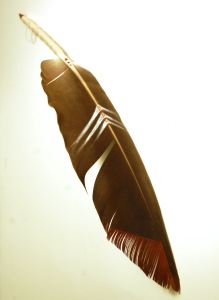
dyed/painted domestic goose feather. this is not trying to be an eagle feather, but you could dye a white feather and trim it to look like one, for sure.
Let’s start with eagles. Eagle feathers are just about the most illegal bird-related thing there is. Even for Native Americans, there is a permit application and way long waiting list to possess eagle parts or feathers- if you’re holding an eagle feather right now, there’s an actual shaman somewhere who doesn’t have one because of you. (or you are an actual Native shaman or official-type who waited years to get one, in which case, fuck yeah, and please post a photo of you holding it, and I’m so glad you finally got to the top of that list, because damn.)
I am not speaking in hyperbole here; it takes years to get a permit to own them, let alone take them from an animal. You can’t sell them or give them away, no matter their age or condition. If you are a verified Native American of a specific tribe with a permit, you can own, but not sell or give away, a feather or eagle parts. Otherwise, it’s up to $100,000 in fines plus jail time- even if you don’t know about these laws. If you find a dead eagle or feather, you can call the local fish and game department, or the BLM in your area, and they will collect the items to be distributed to Native Americans who have permits and are waiting in line for one (don’t make them wait any longer.)
Crows.

This is only a perfectly-legal tattoo of a crow.
Now that we’ve figured out that you can’t keep an eagle feather, what about the less regal birds? How about crows? There are loads of crows. Well…crows are a confusing topic. You can’t sell or market their feathers or parts, since they’re native birds. BUT, you can hunt them with a nuisance permit. So, you’re permitted to possess feathers and parts taken with these permits- but you’d have to be able to prove that as the source of the feathers. So crow feathers are a definite maybe. In Washington state, they’re legal to possess but not to sell, if you can prove you got them this way. Basically, get a permit.
Relevant section of the law:
The crow is classified as a predatory bird (WAC 232-12-004). It is unlawful to hunt for or take predatory birds without a hunting license except as allowed under RCW 77.36.030. Therefore, a hunting license and an open season are required to hunt crows.
However, It is lawful to take crows when found committing or about to commit depredations upon ornamental or shade trees, agricultural crops, livestock, or wildlife, or when concentrated in such numbers and manner as to constitute a health hazard or other nuisance provided that none of the birds, or their plumage, be offered for sale (WAC 232-12-005).
In other words, you’ll have to prove they were destroying your crops and being a gigantic nuisance, or you’ll have to prove you had a license to kill them, and you still can’t sell or trade any part of them.
Fucking Canada Geese.

seriously, fuck these things
Speaking of gigantic goddamn nuisances, Canada Geese (not “canadian geese”, but I hate them so much you can call them anything you like) are a pain in the ass on almost every level. OMG DO NOT FEED THESE DAMN THINGS.
That said, Canada geese are protected under federal law, so a hunting license (and a federal waterfowl stamp) and being in the right season are required to hunt them. Please go here to find out more and sign up and help to defeat the evil. Canada geese come in two varieties- migrating and nonmigrating.
The geese that migrate are not here during hunting season, and it’s illegal to kill them. They’re nomads, these perfectly-welcome geese, and they come through in large flocks then leave LIKE PERFECTLY NORMAL, LIKABLE ANIMALS. Then, there are their evil brothers- the nonmigrating geese. These utter bastards settle in and eat up all the things that native birds crave, and then they SHIT ALL OVER THE PLACE, cackling maniacally at the starving, shit-covered native birds the whole time. If you have a hunting license for these despicable creatures, then yes- you may own their plumage and parts. In fact, with the proper tags and forms, you can sell these things too.
Some other kinds of geese are fully protected, but many are considered game birds and legal to collect from- there is a list of game geese which are legal here as well as the Oregon waterfowl hunting forms, and domestic geese are completely ok to collect feathers from. In fact, all the bigger feathers I tend to use for dyeing and painting are domestic goose feathers- not only because I know someone who keeps them, but because the big white feathers are a perfect blank canvas for working on. They also trim up very easily, and I think they’re the easiest large feathers to work with.
Various Gulls.
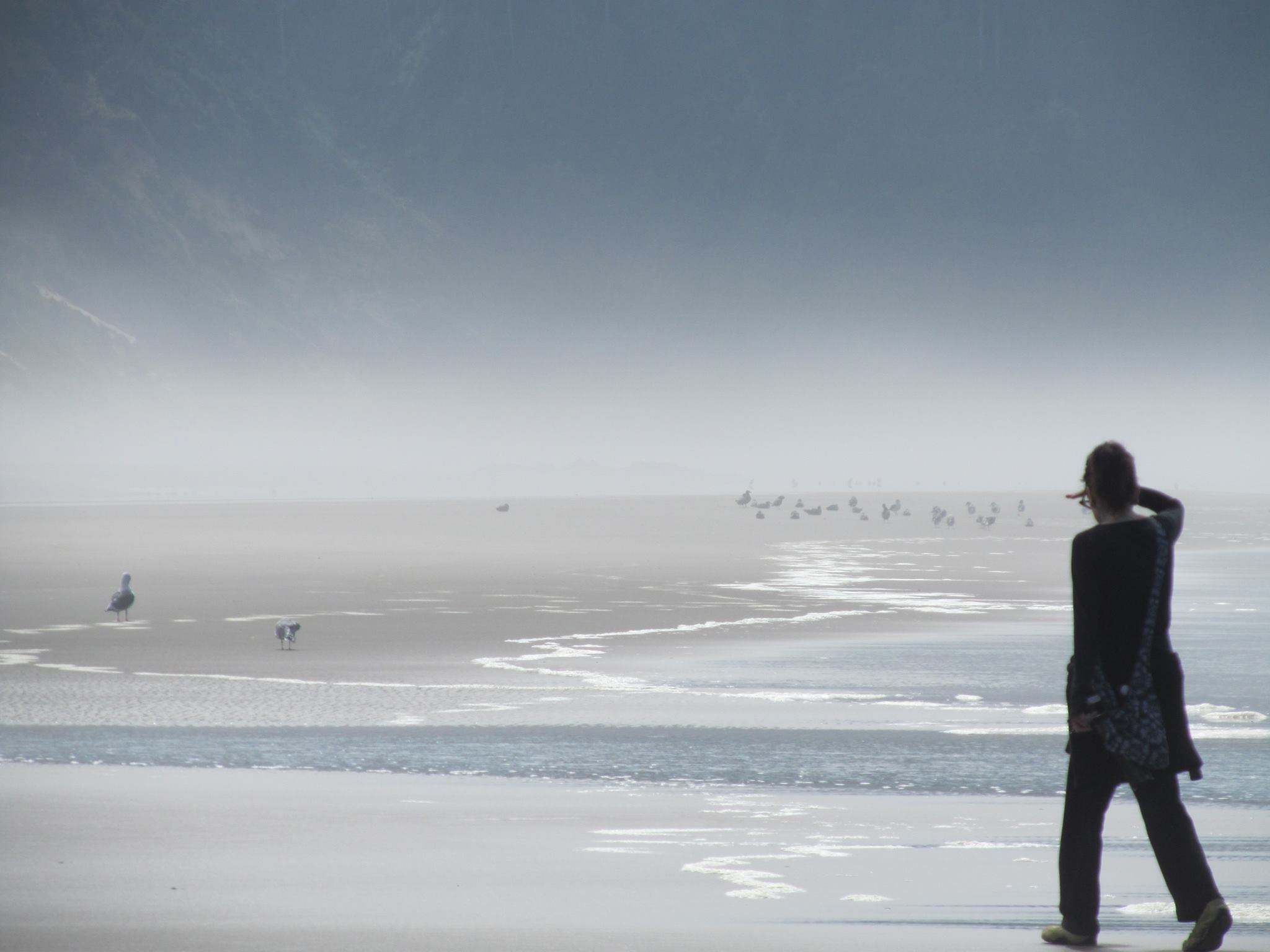
it’s like they don’t know I can’t legally grab and choke them
How about seagulls? There are so many of them, it must be ok, right?
Nope. The most common seagulls here in Cascadia, the Glaucous-winged gull, (and its twin brother, the herring gull) are firmly on the migratory bird list, and it’s completely illegal to own or sell their feathers. If you’ve seen a gull drop a feather, here in the Northwest, you can cross-check to find out if it’s a legal feather.
There are a few, very few, sea birds whose feathers are legal. Go to this bird list and find the species name, then go to the big list of MBTA birds and use ctrl+F to check if it is listed there! In fact, checking any kind of bird this way can be a huge help.
Owls, all sorts.

“her studies”, owl skull owned by local wildlife educational facility which was loaned to me to photograph, posed for image with oyster shell, rocks, antique spectacles.
Owls? No. Never in hell. Of any kind. In order to take photographs of an owl skull for reference, I had to borrow one from a wildlife educational facility for a week. It came with a packet of papers and a reassurance that if I got pulled over on the way home, the center would be willing to tell the police I had it legally. That’s how serious it gets with owl parts. I was nervous.
I also once was handed a dead owl someone found (people know I like dead things), so I sketched it then left it. I was nervous about this, too. Even having the remains there, outdoors, in its natural environment…it’s not something I want to do.
The only way you can keep an owl or its feathers, is if the animal was taken or the parts collected before the MBTA was passed, and you have proof of that. You still can’t sell it or trade it or give it away. This clause, like so many others, only applies if you have the original permit tag from forty years ago. There’s no such thing as a retroactive permission.
Owls are almost completely hands-off. Unless you yourself are a museum (in which case, why are you reading this? go catalog some shit and photograph it for the internet, lazy), you can’t have any piece or part of an owl.
Turkey Vultures and Buzzards.

oh how I love these guys.
Then there’s my personal favorite bird in the NW- turkey vultures! In the US it is illegal to take, kill, or possess turkey vultures, and violation of the law is punishable by a fine of up to $15,000 and jail time too.
It sucks, in a way, because these beautiful birds are often roadkill. They scavenge from the carcasses that are struck by car, and therefore they themselves get run over pretty often. But their long feathers were once in high demand and they were poached heavily, so now their feathers are protected.
BUT, if you work in animal rehabilitation, you can in fact keep an injured live turkey vulture until it is able to go back to the wild, and then you’d have its feathers legally. But, you can never sell or give away those feathers, and you’ll need an educational permit to hang on to them legally.
Small Birds such as Jays, Kingfishers, Flycatchers, Sparrows.
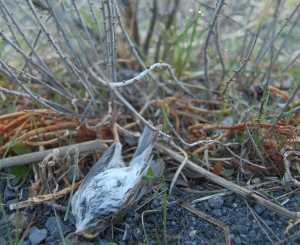
poor guy. he’s tired, let him rest. don’t pluck.
With the exception of european starlings, No, no across the board. To see what a starling looks like, check the end of this article, where there is a photograph of one of the little bastards.
All the smaller songbirds are protected. Hummingbirds, sparrows, finches- all of them, protected.
Wild Ducks, Swans, Turkeys.

wild turkey skull, human molar, domestic duck feathers, snail shells, nuts, squirrel bone, driftwood.
Wild turkey feathers and parts are legal, if they were legally hunted to obtain them. In other words you, or someone you purchased them from, must have a hunting license for turkey. That’s it. You can sell these feathers, trade them, keep them. As long as someone along the line has the license to hunt them, it’s fine. In fact, since they are game birds, you can actually keep their feathers if you find them! ISN’T THAT AMAZING. Their feathers are wonderful, too. Square tips and strong ferrules mean that they’re really resilient. You can dye them and paint them very easily, and trim them into any shape.
They’re also delicious birds.
Swans, on the other hand, are usually not legal to collect feathers from. The trumpeter swan is a big native bird that is almost gone, because it looks a little like some geese that are legal, so people shoot them by mistake. Mute swans, on the other hand, aren’t native. They’re considered domestic birds here in the Northwest, and their feathers aren’t illegal. Just be really, really careful about identifying them, because trumpeters are endangered, and their feathers really shouldn’t be kept.
Ducks are an insanely complicated subject. Some are game birds, and a free-for-all. Others are endangered to the point that only few dozen exist in the world. Some are domestic, or gone feral after escaping the farms. And even more are simply protected by the MBTA. If you’re not sure, leave the feather alone. If you have the chance, you can use the feather atlas to look up the feather- but don’t rely on it completely. Even if you think it’s legal, you can still be fined if it’s not.
Pigeons, Doves, Quail, Pheasants, Grouse.
The pigeons you normally see in cities are likely to be legal feathers to collect. Most of these birds are feral non-native animals, which were brought here then escaped. Mourning doves, rock pigeons, and the like are all fair game for feather collecting, and their feathers are strong and supple so you can dye and paint them, or trim them to mimic other species’ patterns.
Quail, like wild turkey, are a game bird here. You can eat them, hunt them with a license, collect feathers and sell them. Same with ringneck pheasants! Grouse, however, are a special class of game bird. There are a few species of grouse here in Cascadia that are protected. Some are endangered or rare, and therefore they’re covered by local game laws. The rule with grouse is if you can get a hunting license for the species, you can have a feather. If you aren’t allowed to hunt that species, you can’t have their feathers. You can check here for the list of species which are ok to hunt/collect feathers from.
Hawks and Falcons and non-eagle predators.

This is an osprey, a fish eagle. They’re really cool.
Hawks and falcons are just a tiny step below eagles, in their illegality. You can get a permit to collect or possess some hawk feathers- if you’re an educational institution. Unlike with eagles, there’s no exemption for Native American ritual use at all. Now, there are a few bizarre exceptions for falcons and hawks for use in falconry- but you will have to actually be a falconry participant and fill out a ream of permit applications. If you don’t have all those forms and permits, you can NOT have a feather from one of these animals. That means that even if you DO have those papers, you still can’t sell or trade them to anyone else.
Quick recap:
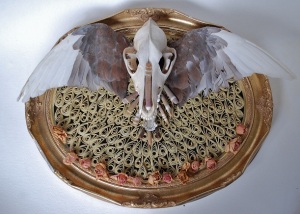 hawks, owls, vultures, eagles, seagulls, ravens, small songbirds, NO NO NO.
hawks, owls, vultures, eagles, seagulls, ravens, small songbirds, NO NO NO.
crows, grouse, quail, wild turkey, MAYBE. Get a permit or hunting license.
city pigeons, your neighbor’s chickens and geese, peacocks, and african grey parrots? HELL YES.
canada goose? PLEASE GET A PERMIT BECAUSE THE ANSWER IS THEN YES
…
european starlings; yes, for fuck sake. YES YES YES. native birds wish you’d throw a rock at them (but don’t, it’s kinda mean, and they’re only little birds)

THIS BASTARD RIGHT HERE.
Starlings are exempt from the Migratory Bird Treaty Act (MBTA) of 1918, which was passed for the protection of migratory birds. Their nests, eggs, young, and/or adults may be removed or destroyed at any time. No permit is required.
Exceptions to the rules.

you can freely take anything this guy drops on the ground.
If you’re a teacher, or you run a nature conservation educational facility, or a museum, you can get permits to display most of these birds and their feathers and parts. You can call up Fish and Game and explain what you want to do, and get the papers to fill out. You can’t sell or trade the feathers, but you can display them or use them to teach. There are permits for this, so if you teach third grade and you want to show the class a seagull’s feather, or a hawk foot, or a bluebird skull, you can get that form filled out and get permission to use one in class.
Some schools can get permission to keep these parts as well, so that all the instructors have access to them.
If you belong to specific Native tribes whose worship requires the use of certain plumage, you can sign on with the department of Fish and Game to obtain and own some of these birds and their feathers.
If you’re not Native, suck it the fuck up. Really, just suck it up. We don’t even belong here, like starlings or sedentary Canada geese, so quit shitting on the locals. If you’re the wrong tribe…suck it up. People who need that shit are already waiting years for it.
If you’re a museum curator, please stop reading my stupid fucking article and go take a thousand photographs, in good light, of every bird feather and skeleton and pelt you’ve got in your collection for me and other artists and researchers to use as reference. PLEASE. Shit, if you need help, email me. I will bring lights and a camera to you and take a thousand pictures for your institution to use and share. Not even joking.
If you’re a licensed taxidermist and merely working with the birds, you can get a permit to do just that, too. It won’t let you sell or keep the end result, though.
If you have a salvage and roadkill collection permit it doesn’t allow you to collect or keep MBTA protected birdstuffs. Sorry.
BUT WHYYYYYYYYYY
Now that we’ve talked about the letter of the law, let’s get a taste of the spirit of it.

I looked at a real dead owl to draw this guy. Then I buried the thing. This is totally ok to do, just don’t bring it home with you.
I want to link to an article about the passenger pigeon, to begin with. There are thought to be two main causes for this extinction- the death of vast forests full of the American Chestnut tree, and human depredation. Basically, they were hunted and eaten faster than they could reproduce, and the lack of a major food source meant they reproduced less. These two things combined completely destroyed the species (the last one died four years before the MBTA was first proposed.)While passenger pigeons are the most well-known birds we’ve wrecked, other birds were also affected by the total lack of regulations at that time. Fashion designers and hatmakers fed a craze for feathered embellishments, making vast sums of money by decorating things with heron and egret feathers (among others). These birds very nearly disappeared simply because of a trend in fashion.

heron at ballard locks in seattle. these guys were almost gone completely because HATS.
Some birds seem common to us, living in Cascadia. Seagulls (herring gulls) are a particularly common sight here. Even in towns pretty far from the coast, there seem to be so many that you might wonder why the hell they’re protected at all. The answer is that we’re not the only place on earth those birds belong, and over their entire range their population has been cut in half in the last ten years or so. In other words- we are the lucky ones who have gotten to keep most of our gulls. They need protecting because in another ten or twenty years, the gulls here might be the only ones left.

sea birds around a nesting area. it looks like a lot, but it might be ALL THERE ARE IN THE WORLD.
Now, if it were only a few of us collecting random shed feathers or picking up roadkill, most of these protected birds would be fine, and recover, and reproduce. People picking up a few feathers is only one small threat in a larger host of them, though. Most migratory birds have lost almost all of their territory to human settlement or development. The pressure on these animals is horrible. Take this problem, and now add poaching ON TOP, and you’ve got species destined to die out fast and thick. I mean, hell, there are critical species that haven’t even been seen for a hundred years– they’re not quite certainly extinct, but it’s pretty damn sure they are. A lot of those birds had lovely feathers, and a lot of them were poached to within an inch of extinction before the developers built over their nesting sites. Not keeping their feathers makes these edgy birds safer in general, and gives them a chance to win out despite their nesting sites and rest sites being destroyed.
Now add on top of ALL THAT, the fact that our climate is changing. Many birds have no place to go, or are now endangered simply by landing in the place they’ve landed for thousands of years. This is shitty for the birds, as is fracking and other careless mining and refining. All the birds that are native to our region are in big trouble. About half of them are at least threatened by climate changes, human development of the land, and pollution- the last thing these birds need is additional pressure from poachers. And when you pick up and keep a feather, you’re poaching. Your feathered cap gives poachers the idea that they can get away with keeping bird parts, because “it’s not for sale”.If you find a dead bird, by all means photograph the feathers and parts. Draw and sketch them. But don’t keep them or take them home to collect. Don’t give the people who will kill for feathers that feeling of safety in numbers. Good luck, and if you find an eagle down, hand it to the Natives. Some folks have been on that list, waiting, for years, and I am sure that only bad juju can accrue from making them continue to wait.
Additional resources and information, and an irrelevant beaver.

this beaver has no place in an article about birds. you can have hunks of beaver fur on your hat all day long. Fuck, you can make a hat OUT OF AN ENTIRE BEAVER, legally.
Giant, more inclusive list of state and federal laws regarding animal parts.
Another artist who uses legal feathers in their work weighs in on the subject.
Awesome site about birds that live here in the Northwest.
The redlist of seriously endangered birds.
!IF YOU HAVE FOUND A FEATHER OR A DEAD BIRD!
Go to this bird list and find the species name, then go to the big list of MBTA birds and use ctrl+F to check if it is listed there!
FEATHER ATLAS to identify found feathers and find out if they’re legal, OR to use as reference for patterns to paint replica feathers with.
Relatively FULL LIST of species you can legally possess feathers and parts from (may vary by state).
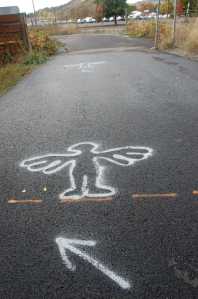
“Men still live who, in their youth, remember pigeons; trees still live who, in their youth, were shaken by a living wind. But a few decades hence only the oldest oaks will remember, and at long last only the hills will know.”
—Aldo Leopold, “On a Monument to the Pigeon,” 1947
requisite soundtrack for this post. And happy Valentine’s day!

If you see one of these don’t try to pluck it. Trust me. It’d be legal, but unpleasant.
